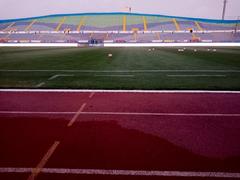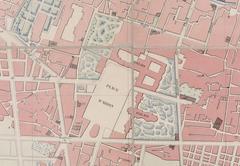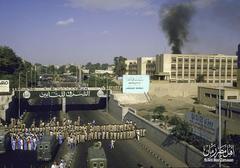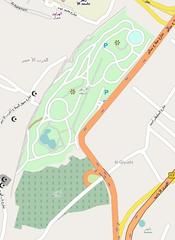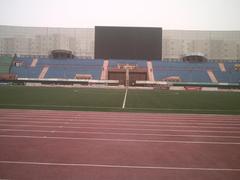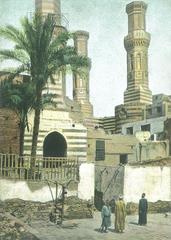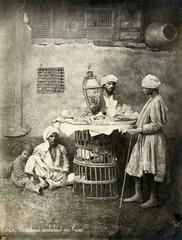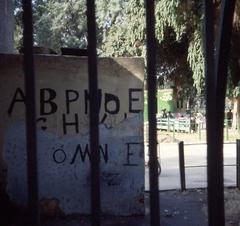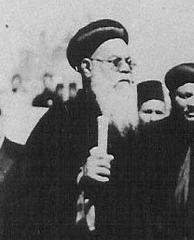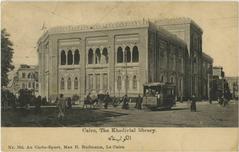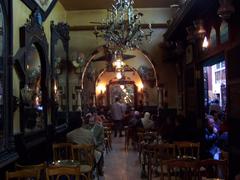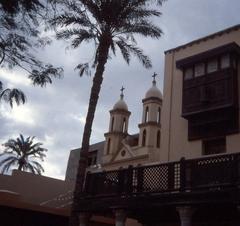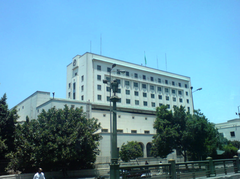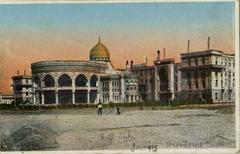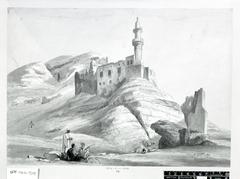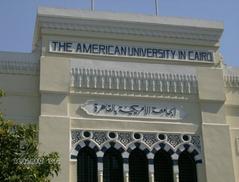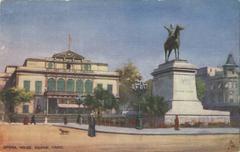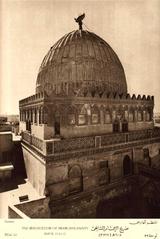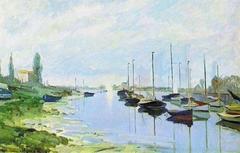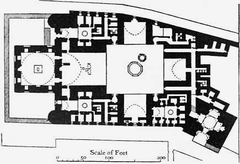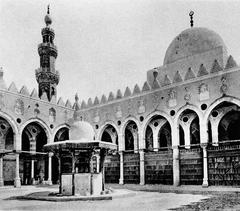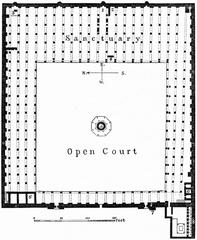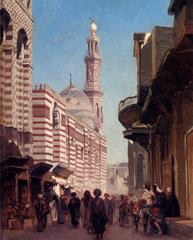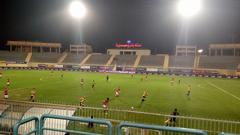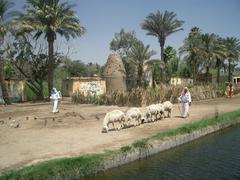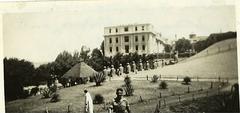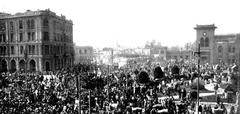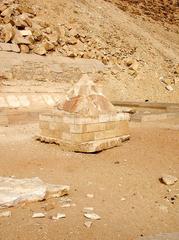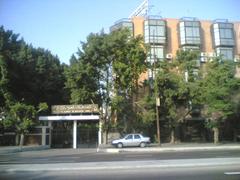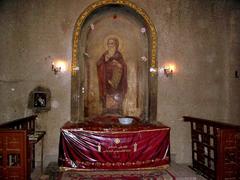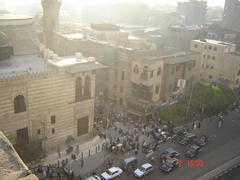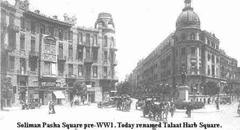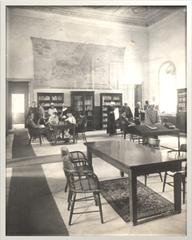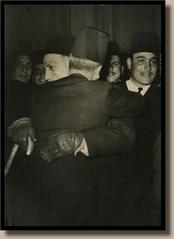Al-Hussein Mosque: Visiting Hours, Tickets, and Comprehensive Guide to Cairo’s Historic Islamic Heart
Date: 14/06/2025
Introduction
The Al-Hussein Mosque, located in the vibrant heart of Cairo’s historic Islamic district, is a monument of immense religious, architectural, and cultural importance. Established in 1154 CE during the Fatimid Caliphate, it is revered as the resting place for the head of Imam Hussein ibn Ali, the grandson of Prophet Muhammad. Its proximity to iconic landmarks like Khan El-Khalili bazaar and Al-Azhar Mosque makes it a focal point for both spiritual pilgrimage and cultural exploration.
Over the centuries, the mosque has undergone various architectural transformations, blending Fatimid, Ayyubid, Ottoman, and Khedival elements. Today, it remains a vital center for worship and community life, hosting key religious observances and welcoming visitors from around the world. This guide provides all the essential information on Al-Hussein Mosque’s visiting hours, ticketing, etiquette, accessibility, and nearby attractions, ensuring you enjoy an informed and respectful experience in one of Cairo’s most cherished sites.
For additional travel insights, consult Hurghada Lovers, Mosqpedia, and Top Ten Egypt.
Historical Background
Origins and Religious Significance
Al-Hussein Mosque’s origins trace back to the Fatimid era, with its construction commissioned in 1154 CE. According to tradition, the mosque was built to enshrine the head of Imam Hussein, transferred from Ashkelon (present-day Israel/Palestine) to Cairo to shield it from Crusader incursions. This shrine makes the mosque a revered pilgrimage site for both Sunni and Shia Muslims, especially during significant observances such as Ashura and Mawlid (Hurghada Lovers).
Architectural Evolution
- Fatimid & Ayyubid Eras: The earliest structure showcased simple yet elegant Fatimid design, with the original Bab Al-Akhdar gate remaining as a historical fragment. In the Ayyubid period, Sultan Salih Najm al-Din added a minaret featuring arabesque motifs.
- Ottoman & Khedival Renovations: Major changes occurred in 1874 under Khedive Isma’il Pasha, who reconstructed the mosque with Ottoman and Italian Gothic Revival influences. The result is an architectural blend visible in the domes, spires, and decorative details.
- Modern Enhancements: Recent upgrades include mechanized Teflon-coated canopies in the courtyard, providing shade and comfort for worshippers, and expanding the mosque’s total area to over 5,700 square meters (Mosqpedia).
Religious and Cultural Role
The Shrine of Imam Hussein
At the mosque’s heart lies the shrine believed to house Imam Hussein’s head. This site draws pilgrims year-round, with special visiting hours for men and women to ensure an orderly and respectful experience.
- Women’s Shrine Hours: 9:00 AM – 11:00 AM
- Men’s Shrine Hours: 12:00 PM – Evening prayer and one hour after
The mosque is a spiritual beacon, particularly during Ashura, Ramadan, and other Islamic holidays, when it becomes a hub for communal prayers, Sufi gatherings, and religious festivities (Top Ten Egypt).
Central Role in Islamic Cairo
Situated among Cairo’s historic streets, the mosque is central to religious life and community events. Its location near Khan El-Khalili and Al-Azhar Mosque places it at the crossroads of Cairo’s spiritual and social fabric.
Practical Visitor Information
Visiting Hours
- General Mosque Hours: 8:00 AM – 7:00 PM (may vary during holidays and special events)
- Shrine Hours: As specified above for men and women
Tickets and Entry
- Entry Fee: Generally free for all visitors and worshippers
- Guided Tours: Some tours or exhibitions may require tickets, available through authorized operators or the mosque’s visitor center
Accessibility
- Facilities: Ramps and accessible entry points are provided for differently-abled visitors
- Mobility Tips: Visit during off-peak hours to avoid crowds and ensure ease of movement
Dress Code and Etiquette
- Dress Modestly: Arms and legs must be covered; women should bring a headscarf
- Shoes: Remove before entering prayer halls; bags or racks are provided
- Behavior: Maintain silence, avoid eating or drinking inside, and respect prayer activities
- Photography: Permitted in most areas, but ask permission near the shrine or when photographing individuals
Security and Entry Procedures
- Security Checks: Expect metal detectors and bag inspections
- Prohibited Items: Large bags, alcohol, tobacco, and sharp objects
Navigating the Mosque and Surroundings
Layout and Highlights
- Entrances: Multiple, including three on the western side and one on the southern side
- Interior: Five rows of marble columns and a spacious prayer hall, featuring one of the largest chandeliers in the Arab world
- Courtyard: Shaded by mechanical canopies; includes a central fountain for ablutions
- Women’s Prayer Areas: Enhanced by decorative mashrabiya screens
Facilities
- Ablution and Restrooms: Located near main entrances
- Shops: Nearby stores offer religious items and souvenirs (no food or drinks inside)
Nearby Attractions
- Khan El-Khalili Bazaar: Cairo’s famous market for crafts and souvenirs
- Al-Azhar Mosque: Renowned center of Islamic scholarship
- Islamic Cairo District: Home to a wealth of historic mosques and architectural landmarks
Combine your visit to Al-Hussein Mosque with these sites for a comprehensive cultural experience.
Visitor Experience & Travel Tips
- Best Visiting Times: Early mornings or late afternoons for fewer crowds
- Guided Tours: Recommended for historical and architectural insights
- Interacting with Locals: Politeness and cultural respect enhance your experience; avoid debates and respect spiritual observances
- Accessibility: Wheelchair-friendly, though peak times can be challenging for mobility
Preservation and Heritage
Ongoing restoration and modernization efforts preserve the mosque’s historic integrity while enhancing visitor comfort. The mosque is also believed to house one of the oldest complete Qur’an manuscripts, adding to its religious and historical prestige (Hurghada Lovers).
Frequently Asked Questions (FAQ)
Q: What are the visiting hours of Al-Hussein Mosque?
A: Generally, 8:00 AM – 7:00 PM. Shrine hours: women 9:00–11:00 AM, men 12:00 PM–evening prayer and after.
Q: Is there an entry fee?
A: Entry is free; guided tours or special exhibitions may require tickets.
Q: Are guided tours available?
A: Yes, and highly recommended for a deeper understanding.
Q: Is the mosque wheelchair accessible?
A: Yes, with ramps and accessible facilities.
Q: Can non-Muslims visit the mosque?
A: Non-Muslims are welcome outside prayer times, but some areas may be restricted during services.
Conclusion
The Al-Hussein Mosque stands as a living testament to Cairo’s Islamic heritage, blending centuries of history, spirituality, and architectural mastery. Whether you’re a pilgrim, history buff, or cultural explorer, your visit will be enriched by understanding the mosque’s traditions, respectful etiquette, and the vibrant context of Islamic Cairo.
For the latest updates, guided tour options, and travel tips, download the Audiala app, follow our social channels, and consult official resources before your visit.
Visuals such as high-quality images, interactive maps, and virtual tours are recommended to enhance your planning and on-site experience. Include descriptive alt text, e.g., “Al-Hussein Mosque facade at sunset in Cairo.”
